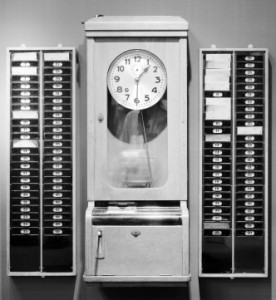At the Washington Post, Philip Kennicott looks at changes in how people work and play, and implications for cultural organizations, especially museums. I’m not sure all of the claims made by people he cites add up.
First, from Elizabeth Merritt, of Center for the Future of Museums. Kennicott writes:
A transformation in how we work, says Merritt, will affect both how museums employ people and how they may need to change to attract new audiences. “Increasingly we see people who had regular full-time jobs who are now picking up pieces of work,” she says. It’s called “work-life blending,” which in some cases means people may feel they are working all the time, while others, especially younger workers, mix work and play throughout the day and through the whole week. The “work week,” with its two days of downtime on the weekend, is already a thing of the past for many Americans.
And these changes, she says, could well impact the entire work force, not just people who, for example, drive for Uber, or specialists with highly sought-after skills who thrive in the new “gig economy.” Museums may begin to employ more of their staff on a piecemeal basis, whether that’s relying more on guest curators, or contracting specific services only as needed.
But what about how that affects audiences? When will they come? Does it make sense to charge $25 for admission if your audience is increasingly made up of frenetic work-life blenders who may only want to visit for an hour, here and there? Merritt says that many museums are only now catching up with the need to have more flexible hours, opening earlier or staying open later to attract audiences. But the emergence of the new labor economy has happened so quickly, it has taken many institutions by surprise. “More museums are just now saying we should have alternative hours. Just as they are getting that, the game is changing on them.”
It’s not the focus of the TrendsWatch report, but Merritt does touch on the question of leisure, citing John Maynard Keynes’s prediction (in 1930) that progress in society would ultimately lead to a 15-hour work week. That obviously didn’t happen. Automation didn’t lead to a society that valued leisure, but simply more increases in efficiency and productivity, and more profits for those who owned the means of production.
“The more we are able to work efficiently the more work we are expected to do,” says Merritt.
The question for museums is whether they can do anything about this. Do they merely adapt to attract people who have less and less time to visit, fighting harder for a more scattered and frantic audience? Or do they address the issue head on?
I do enjoy Keynes’ essay – you can read it here – but of course what is most interesting about it is how he got his prediction wrong. First, to say that increased productivity since the 1930s all went to more profits is silly: real wages have risen enormously since then as a result of increased productivity (if you understand the concept of ‘cost disease’ you already know this). Merritt gets it wrong. Hours worked are a function of the intersection between what works best in terms of the operation of businesses and what works best in terms of individual preferences. Employees are generally good with a work-week in the 40-something hours range; that’s why we have that instead of, say, a 25-hour week as the standard (If you think I am wrong, go tell all your employees that from now on there will be a 25-hour work week, and a commensurate reduction in weekly pay, and see if you get applause). Look at the weekly hours of the self-employed for further evidence. What Keynes got wrong was that he thought we would turn our productivity gains into more leisure rather than into more money. We chose, for the most part, to keep leisure the same, and take the cash.
But are we working more? Not really. Here is the Gallup Survey on hours worked per week since 1989 (you have to scroll down a bit). Since 1989 there has been remarkable consistency, with the work-week varying slightly with the business cycle between 42 and 44 hours per week. No trend, and not much change given all the shifts in the economy. Some high wage earners might be working more, but then people with high wages have a good incentive to do so.
So, we might not feel we have much free time, but hours worked isn’t the culprit.


You say: ” It seems odd to change museum hours now if in fact it is becoming easier for people to find a few hours during a weekday to visit.” But I don’t think it is becoming easier to find a few hours. The workers in the gig economy, part-timers, freelancers, etc. whom I know do not feel they have free time. In my experience they feel harried to constantly find more work, and rather than “squander” an hour (and an expensive hour) in a museum, they will look for a way to earn more cash, line up another job. It seems to me that it is freelancers who lack leisure, not those with 40-hours-a-week jobs. But this is only my impression; if there are statistics to show otherwise, it would be interesting to see them.